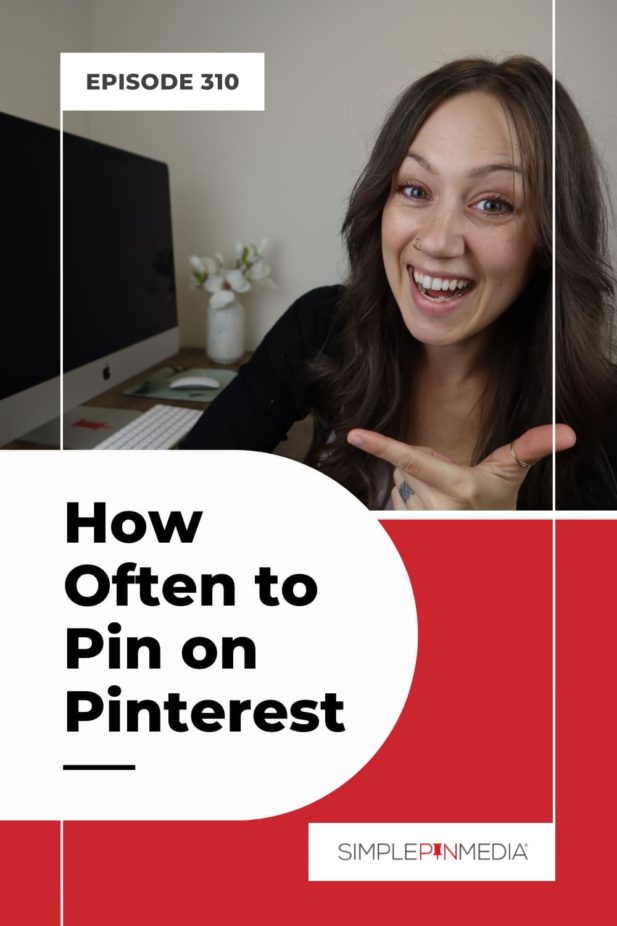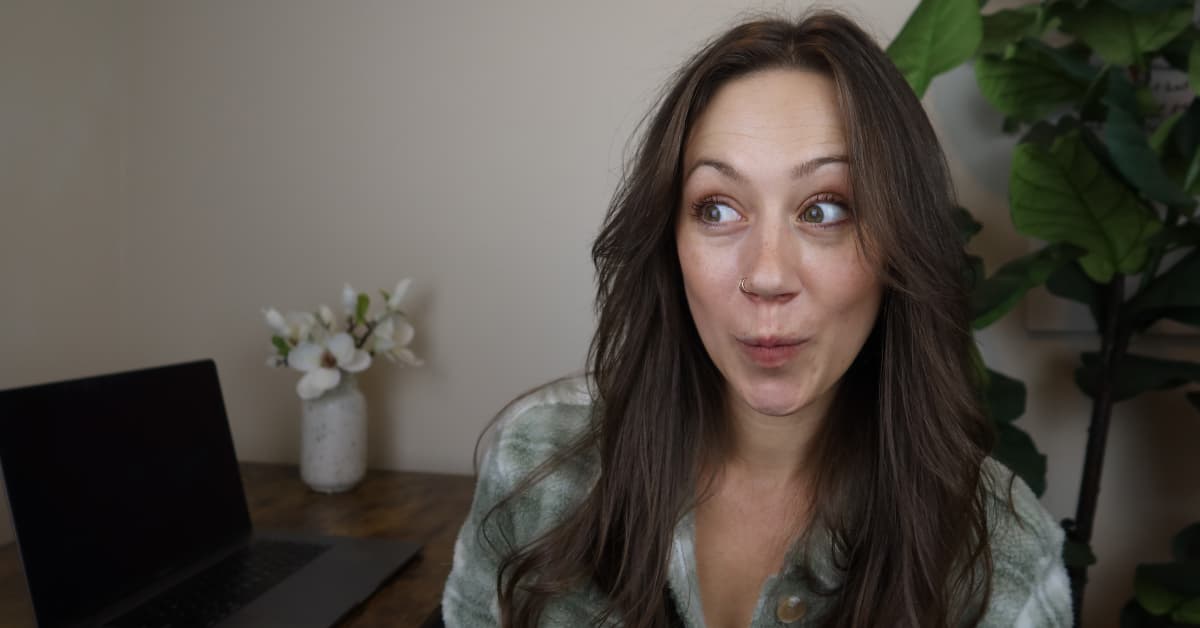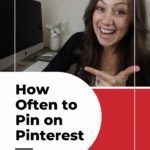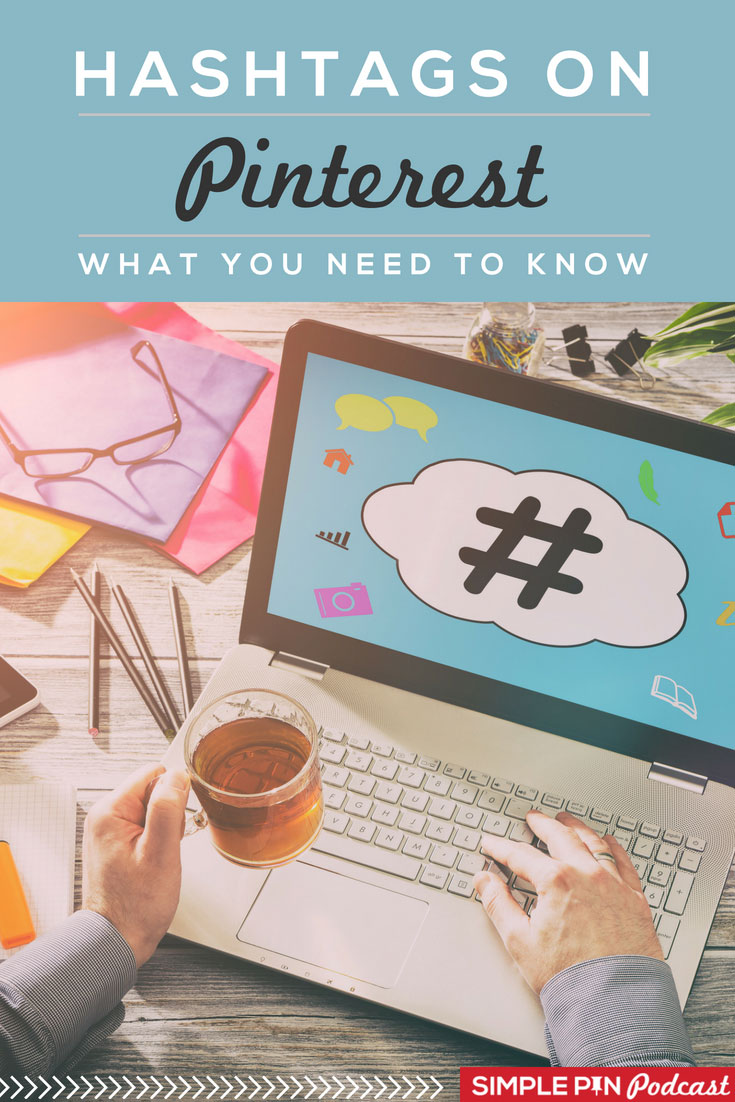How do you decide what Pinterest strategy to use? Over the summer, we got a little risky with some of the different theories around Pinterest marketing.
Did we really believe our own advice that we give to others or did we need to put it to the test and prove ourselves wrong? We ran three dynamic tests on the platform and this podcast episode is all about what we learned and what we’ll takeaway for the future.
Keep an open mind as you listen and think about challenging yourself to think outside the box.
In this episode, you will learn the following:
- The impact of the number of pins per day on your Pinterest strategy
- How to think through what’s important for your niche and business type
- Why we still think Idea Pins are amazing at growing brand awareness

PINTEREST strategy testing
We ran three monthly tests, with a different pinning strategy each month.
JULY 2022 – We pinned 20 pins per day consistently, all types of content with no specifics
*We had been pinning 7 Pins/day and 1-2 Idea Pins per week
AUGUST 2022 – We pinned our new content ONE time (total) to the most relevant board, with 1-2 Idea Pins/week
SEPTEMBER 2022 – Pinned 1 Idea Pin every business day of the week
LET’S BREAK IT DOWN
Before we started our tests, we were pinning around 5-7 Pins per day. Once Idea Pins became more important, we started pinning 1-2 Idea Pins per week. With those consistent pinning numbers, we were seeing start high season/low season trends in our stats.
We’ve also been hearing from some people that they’re pinning 35-50 Pins per day, but some were saying only pinning their new content once to the platform was doing well. When coming up with our ideas for the tests, we decided to go with a middle ground approach.
This post contains affiliate links, which means if you make a purchase through these links, we may receive a small commission at no extra cost to you. Click here to read our full disclosure policy.
first test – 20 pins per day
Thinking of the “middle ground”, we started our first test with just pinning 20 Pins per day. We scheduled these through Tailwind and that was all we did. No Idea Pins, no manual pinning, not a ton of rhyme or reason to the pinning strategy.
Every week on Wednesday, we release our newest podcast episode and corresponding blog post, so we would pin that content. We’d then fill up the schedule with our older content.
July is notoriously a low traffic month for us, so as we evaluated our results, we kept this in mind.
RESULTS: We saw an increase across the board of the three metrics that we track – outbound clicks, impressions, and saves. Traffic increased by 3%, impressions increased by 46%, and saves increased by 36%.
second test – new content pinned only once
We pulled WAY back and pinned our new content only ONCE. Not once per day or once per week, just once total to the most relevant board. We also added back in 1-2 Idea Pins per week.
RELATED: How to create Idea Pins for your business (workshop)
We didn’t schedule any of these pins in Tailwind, because we were pinning so little. Instead, we uploaded directly through Pinterest’s native scheduler.
RESULTS: We saw a DECREASE in all three metrics! A 25% drop in traffic, 12% drop in impressions, and a 28% drop in saves.
This is a hard one, because it really depends on how much back content you have. Some people might have great success, but for us, it didn’t work at all. The reason we wanted to test this was because we’d been hearing from other content creators and Pinterest teachers that this is ALL you need to do.
As a side note, we could see this working for folks in the food blogger space or DIY content creator space, if they have a backlog of content going back years. The snowball of their Pinterest strategy is probably already working for some of these people, so they wouldn’t need to pin as much as consistently.
One of the most important things to think about is your niche. If you’re comparing your stats to someone who is in a totally different niche than you, this will be a tough comparison. Simple Pin Media is a B2B (business to business) model, where someone like a food blogger or DIY content creator is considered B2C (business to consumer).
third test – one idea pin per day
For this month, we pinned just ONE Idea Pin per day on every business day of the week. We didn’t pin anything else, no static pins, nothing.
This was the most telling test for us – we saw the lowest traffic numbers we’ve seen since 2017. We had a 17% drop in traffic!
BUT we had a 57% increase in impressions. We did have a 2% drop in saves, but we consider this staying fairly level.
What we took from this is that Pinterest has been telling us the truth, that Idea Pins are really a great tool for brand awareness and impressions.
And if you don’t know about impressions, they’re really just who saw your Pin in the feed. But if my eye is going to the right, and your Pin is on the left, I didn’t see it. So you’ll get an “impression”, but I didn’t take any action on it.
RELATED: How to get more saves on Pinterest (podcast/blog post)

FINAL RESULTS and what we learned
For Simple Pin Media specifically, we believe that pinning our new content AND relevant past content is still important. We’ve gotten some pushback on that in the past – where people will say you don’t need to pin to multiple boards or ALL the relevant boards. But we still see that as being effective, and these tests proved that for us as well.
We’re also going to continue to incorporate a few Idea Pins into our strategy as well, because these definitely brought a good amount of impressions and will continue to help with brand awareness. This holistic, diverse approach seems to be the best path forward for us right now.
RELATED: Keys to marketing consistently on Pinterest (podcast/blog post)
These tests showed us that diversification of Pin formats is important! We want to get in front of the most eyeballs as possible, so we’re incorporating these different types of Pins and Pinterest ads.
One other factor to consider is time spent on the platform. Our test in September (1 Idea Pin per business day), was a LOT of work. Not necessarily a bad thing if it’s bringing a lot of traffic to our website and brings clear results (clicks, sales, email subscribers), but impressions isn’t the most important metric to us.
what can you take away?
From these tests, we can say with confidence, that what we’re doing is a good, solid strategy. Depending on the amount of past content you have, your Pins per day can be anywhere from 5-20. It definitely doesn’t have to be 20 Pins per day, but it needs to be consistent.
If you’re worried about testing in fear that you won’t recover from a loss of traffic, here’s something to consider:
You’re listening to this podcast and maybe feeling like testing might be a good idea, it probably means that you’re not getting the results you want or know you can do better. If that’s the case for you, why not try testing?
Nothing on Pinterest (or anything in the online world, really) is permanent. We have monthly traffic stats from all the way back to January of 2017, and we’ve always had high times and low times. Our traffic is seasonal for our niche, but it always comes back on the upswing. If you test something and it doesn’t work at ALL, go back to what you were doing.
We do understand that it’s easier said than done. Here at Simple Pin, we have multiple streams of revenue – Pinterest ads management, our Simple Pin Shopify store with small products for purchase, newsletter sponsors, affiliates, and more.
If you have just one (or a few) streams of revenue, testing one of those can feel tough! We totally get that. In that case, it’s even more important to evaluate WHY you’re using a specific platform. Think through your different revenue streams, where traffic is coming from, what your goal is for each platform.
Take into consideration what platform or revenue stream you’re comfortable getting risky with. But it is important to try different things and think outside the box. If we test a Pinterest strategy and find something that works well for us, we can double down!
If you only have one stream of revenue, we say get a little bit outside of your comfort zone! Diversify, try some different options, push open the levers that feel like they might be something for your business.
important notes before testing
If you’re listening and thinking you want to test some stuff out, here are some things you should think about:
- DOCUMENT YOUR TEST – Pick your top 2-3 metrics that are important to you or that you feel are important to track and document those religiously. Create a simple spreadsheet or just take notes in a notebook until the end of your test. You won’t be able to come away with ideas or strategies without tracking your progress.
- KNOW YOURSELF – If you think tracking daily or weekly will freak you out and make you want to stop the test, don’t track until the end of your testing period! You don’t want to scare yourself out of stopping the test early because you’re panicking about the early results.
- GIVE YOURSELF SOME TIME – Finding a Pinterest strategy is a long game. A one week test will give you almost zero helpful information. We’d say a month is the minimum you should test out different strategies, because you really won’t get useful numbers before that.
Something to note here is that we’ve seen Pinterest analytics or Google Analytics glitch and drop all traffic or impressions to zero. These are ALWAYS corrected. So if you’re checking daily and you see a huge drop in traffic, it may be just a glitch, and now you’ve borrowed trouble.
We’d love to hear from you! Do you have an idea for a Pinterest strategy test? Have you ran a test or thinking about running a test? If you decide to try some things out, report back and let us know how they worked for you and what you learned.
You can always comment here on the blog post or DM us on Instagram.
For further reading/listening:
- Keys to building brand awareness on Pinterest (podcast/blog post)
- Growing your traffic and revenue on Pinterest (podcast/blog post)
- Best Pinterest Approved Schedulers (blog post)
- Idea Pin content planning (podcast/blog post)








